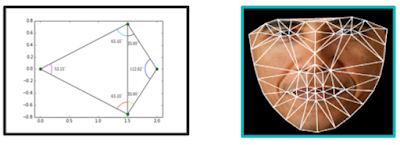MayChallenge (59) (60) | Course Schedule And K Closest To Point Origin
There are a total of
numCourses courses you have to take, labeled from 0 to numCourses-1.
Some courses may have prerequisites, for example to take course 0 you have to first take course 1, which is expressed as a pair:
[0,1]
Given the total number of courses and a list of prerequisite pairs, is it possible for you to finish all courses?
Example 1:
Input: numCourses = 2, prerequisites = [[1,0]] Output: true Explanation: There are a total of 2 courses to take. To take course 1 you should have finished course 0. So it is possible.
Example 2:
Input: numCourses = 2, prerequisites = [[1,0],[0,1]] Output: false Explanation: There are a total of 2 courses to take. To take course 1 you should have finished course 0, and to take course 0 you should also have finished course 1. So it is impossible.
Constraints:
- The input prerequisites is a graph represented by a list of edges, not adjacency matrices. Read more about how a graph is represented.
- You may assume that there are no duplicate edges in the input prerequisites.
1 <= numCourses <= 10^5
This is input is a graph. If possible finish all course then not exitst cycle directed on graph. Topological Sort is algorithm is a linear ordering of vertical such that for every directed egde uv, vertect u come before vertect v in ordering. Topological Sort is working when Graph Not Exist Cycle.
Example graph:
 |
| Image from thuytrangcoding |
My code:
K Closest Points to Origin
We have a list of
points on the plane. Find the K closest points to the origin (0, 0).
(Here, the distance between two points on a plane is the Euclidean distance.)
You may return the answer in any order. The answer is guaranteed to be unique (except for the order that it is in.)
Example 1:
Input: points = [[1,3],[-2,2]], K = 1 Output: [[-2,2]] Explanation: The distance between (1, 3) and the origin is sqrt(10). The distance between (-2, 2) and the origin is sqrt(8). Since sqrt(8) < sqrt(10), (-2, 2) is closer to the origin. We only want the closest K = 1 points from the origin, so the answer is just [[-2,2]].
Example 2:
Input: points = [[3,3],[5,-1],[-2,4]], K = 2 Output: [[3,3],[-2,4]] (The answer [[-2,4],[3,3]] would also be accepted.)
Note:
1 <= K <= points.length <= 10000-10000 < points[i][0] < 10000-10000 < points[i][1] < 10000
Thanks you ! And see you later .



Nhận xét
Đăng nhận xét